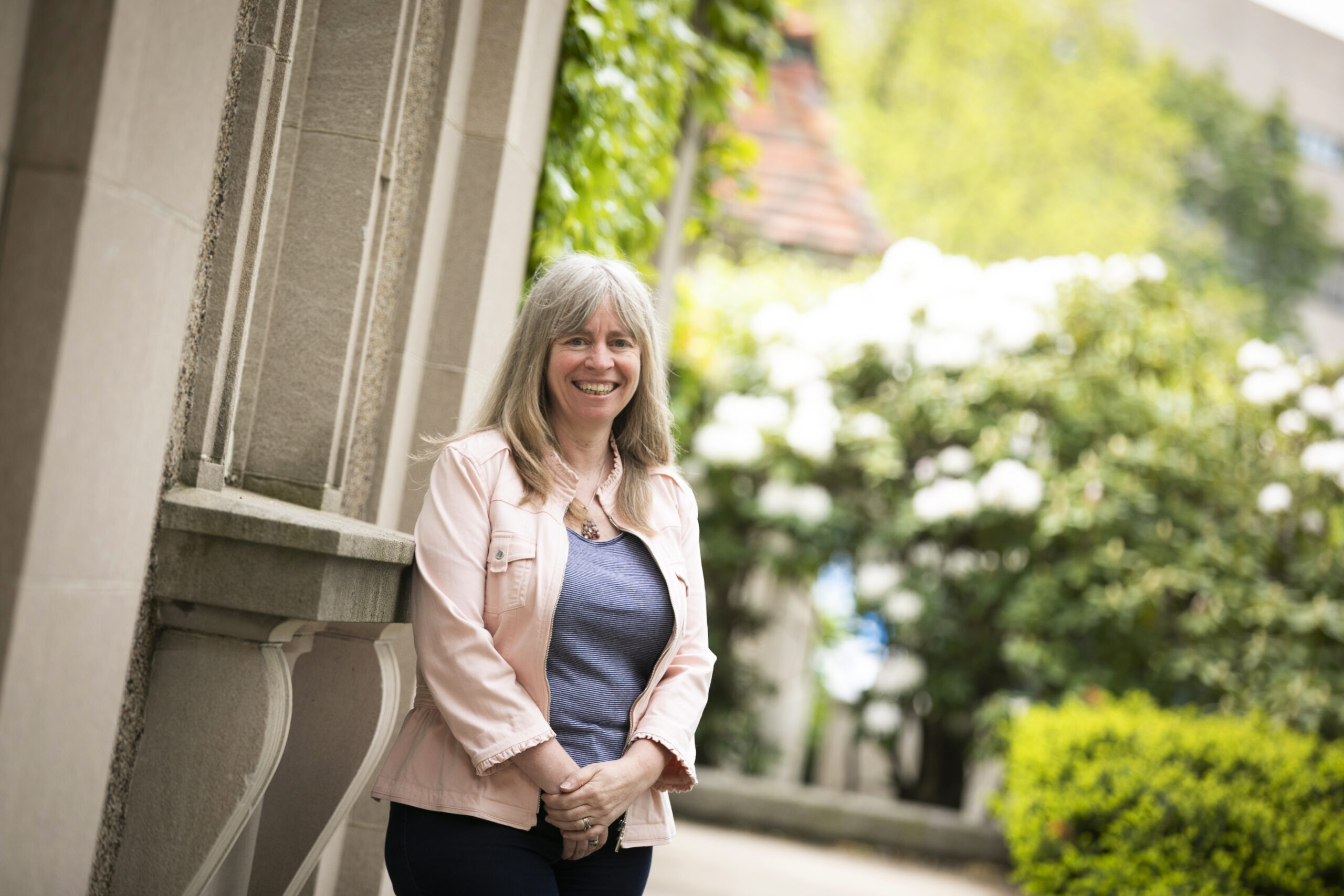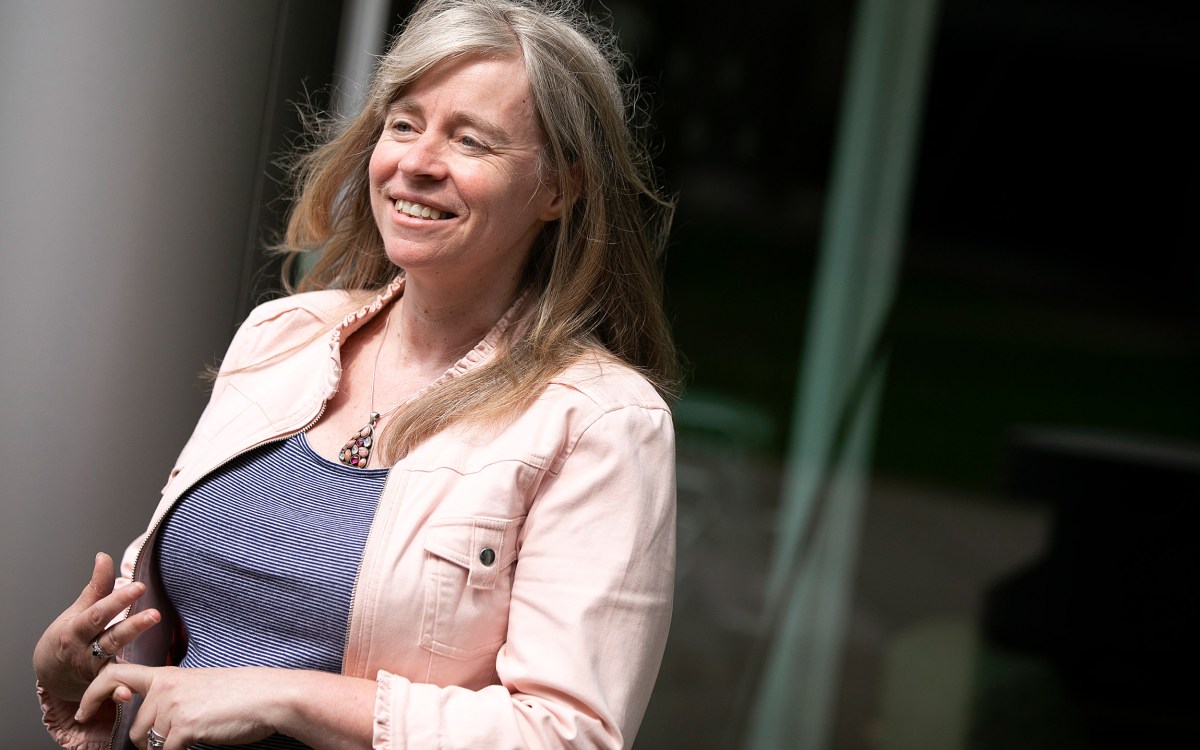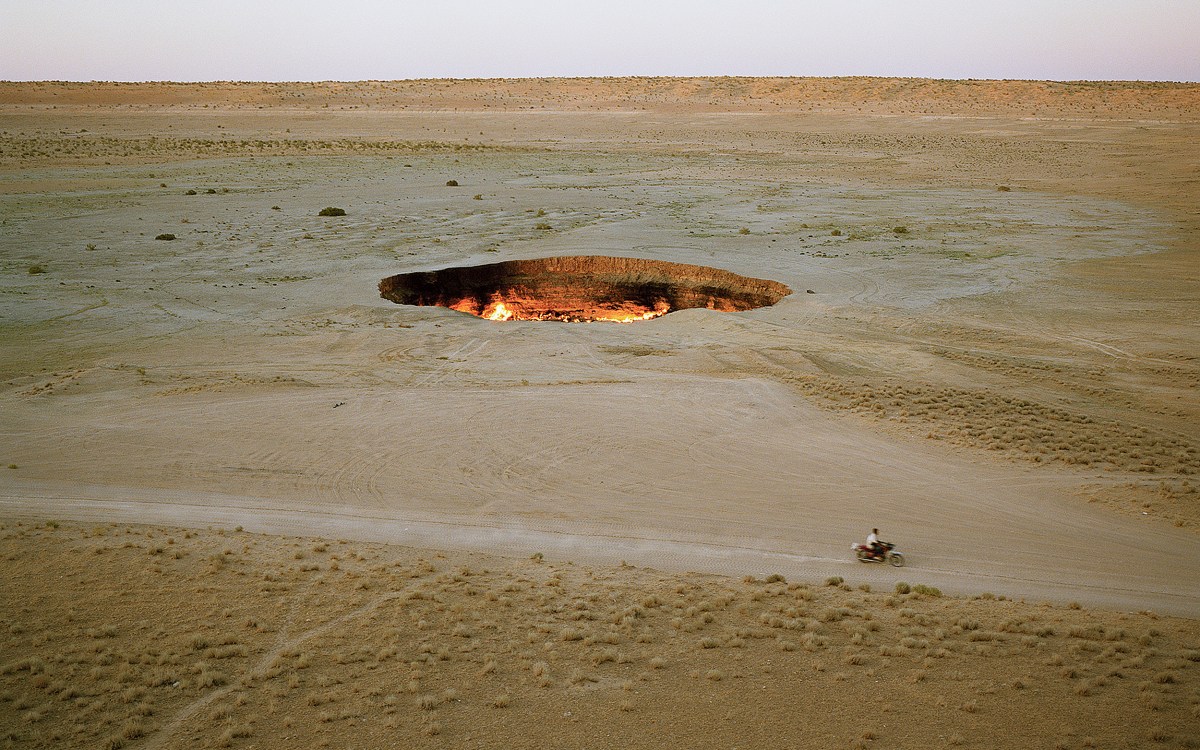
Jane Pickering is looking forward to building new ways for students and visitors to learn and explore at the Peabody Museum.
Stephanie Mitchell/Harvard Staff Photographer
Peabody’s incoming director shares strategies for new era in museum work
Online learning, indigenous collections are at the forefront for Jane Pickering
When Jane Pickering assumes her new role as William and Muriel Seabury Howells Director of Harvard’s Peabody Museum of Archaeology & Ethnology July 1, she will have an eye on both the past and the future of the famed museum.
Pickering, who was named to the position yesterday by Edgerley Family Dean of the Faculty of Arts and Sciences Claudine Gay, has been the executive director of the Harvard Museums of Science & Culture (HMSC) for six years. She has more than 30 years of experience working in university museums, and was appointed to the National Museum and Library Services Board by President Barack Obama in 2016.
Pickering spoke with the Gazette about her love of artifacts, her leadership experience, and her plans for the Peabody.
Q&A
Jane Pickering
GAZETTE: What has it been like to be part of the Harvard museum community?
PICKERING: I’ve been at Harvard for six years and have loved being here. There are so many amazing people on campus, and having the opportunity to work across FAS has been an incredible experience. We have a wonderful community here of museum people — people who are working in the museums, as well as all the people who are interested in and supportive of the work that the museums are doing.
I vividly remember, like most people who have seen them, the moment I first saw the Glass Flowers at the Harvard Museum of Natural History, which are impossible to explain to anyone who hasn’t been in the gallery. One of my favorite things is watching a visitor’s face when they realize they are made of glass. It’s just one example of the millions of spectacular objects in the Harvard collections, and so for a museum person like me, it is a perfect place to be.
GAZETTE: What have you learned about museum education from your experience as executive director of HMSC?
PICKERING: I’m very proud of what we’ve accomplished at HMSC, which I think has demonstrated the huge educational potential of the FAS collections, particularly in serving the wider community. We’ve had a huge increase in attendance, with more than 300,000 annual visitors to the museums. We completed 21 major exhibitions in our first five years, together with innovative programs for public and K‒12 audiences. More than 150 faculty have been part of museum activities in meaningful ways — as exhibit curators, advising us on program development, and working on presentations. I’m proud of how we’ve worked across campus, playing a leadership role in how museums can work together and being a model for other universities.
Learning through museum collections is an unparalleled experience, hard to describe and unique in its impact. Back when I was doing my degree in museum studies, we had an exercise called “50 Ways to Look at a Big Mac Box” to help us think about different aspects of knowledge. Here at Harvard, initiatives like Professor Laurel Ulrich’s “Tangible Things” project can compare extraordinary objects like a Tiffany vase with a Glass Flower to question traditional categories of knowledge. The power of “real things” is unequalled, whether it is being able to touch one of the oldest rocks on Earth or view an exquisite Hopewell mica effigy.
The museums play a fundamental role in the student experience both inside and outside the classroom; more than 85 percent of undergraduates use museum collections during their time here. At HMSC, we worked on initiatives to facilitate the use of the museums outside the classroom, like helping students learn the important skill of how to communicate research to a broad public. For several years, students from the Organismic and Evolutionary Biology course “Biology of Fungi” have run a Fabulous Fungus Fair for our visitors.As online and nonresidential learning become more mainstream, it’s important to think about how students benefit from a residential experience like Harvard.
“I’m proud of how we’ve worked across campus, playing a leadership role in how museums can work together and being a model for other universities.”
GAZETTE: What makes the Peabody so distinctive?
PICKERING: The collections at the Peabody are extraordinary. They are the largest university-based collection of their type in the world, comparable with some of the greatest museums in the U.S. and elsewhere. They cover the entire globe and range of human history and are an irreplaceable record of individuals’ and communities’ creativity and culture. It will be a privilege to collaborate with people both on- and off-campus to think about the unique questions [the collections] raise and the opportunities they enable, unrivaled teaching opportunities and hundreds of research projects being just the start.
I thought this position was an exciting way to remain part of the museum community at Harvard, but also to have the opportunity to work more deeply with the Peabody in particular. I think we have the opportunity to be leaders when it comes to thinking about the profound issues facing us and other museums across the world.Under former President Drew Faust, and now under President Larry Bacow, Harvard is beginning to grapple with its past, and, building on the research and programs already underway, the Peabody can play a crucial role in that process.
There are many questions about how to be an ethical steward of anthropological collections today. What does it mean in terms of storage and conservation, but also, what does it mean in regard to our responsibility to society and to indigenous communities around the world? Those questions are fundamental for the Peabody. And Harvard is a place where you can address these challenging issues in novel ways, using the collections to foster deep conversation and embrace the perspectives of multiple stakeholders.
GAZETTE: What are your goals for your next Harvard chapter at the Peabody?
PICKERING: I’m looking forward to supporting the incredibly talented museum staff. Under Director Jeffrey Quilter’s excellent and thoughtful leadership, they have expanded academic programs, completed many significant collections stewardship and conservation projects, and created new publications, exhibitions, and programs that bring the collections to life.
On the conservation side, Peabody staff have worked on numerous projects, like a recent collaborative and in-depth study of a unique Alutiiq warrior-whaler kayak with Alutiiq consultants, that is now on display at the Alutiiq Museum in Kodiak, Alaska. Using new analytical techniques to investigate the materials in its construction, the group was able to facilitate conservation of an irreplaceable object and develop knowledge of technologies that inform contemporary kayak-making and promote public awareness of Alutiiq maritime traditions.
The Harvard Yard Archaeological Project is another wonderful example of the staff’s work on educational programming. I was thrilled that we were able to livestream activities into K‒12 classrooms around the country this past fall, so middle-school students could interact with the students taking the class on campus.
I am also enthusiastic to work closely with the Peabody’s new faculty executive board, which is currently being appointed by Dean Gay, especially in thinking about the distinctive role of a university museum on campus, within the wider community, and as leaders within the museum field. These are questions I’ve addressed throughout my career.
One of the exciting things about the Peabody is there is enormous interest across campus in the collections and their potential. The Peabody is very closely tied with the departments of Anthropology and Human Evolutionary Biology, but also collaborates with the Divinity School, Law School, and departments across FAS. This is something that makes the job very inspiring because when I look at the collections, the cross-disciplinary possibilities are endless.





